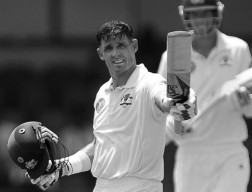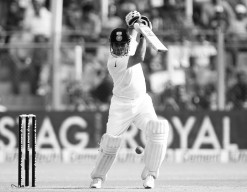
“So must ancient Italy have felt when she heard of the death of Hannibal” was the succinct analysis of cricket writer RC Robertson-Glasgow when the England team and fans alike witnessed Sir Donald Bradman’s dismissal for a duck in his last Test (the 1948 Ashes series).
Any cricket enthusiast will be able to gauge the feelings of utmost relief in the English camp when they were rid of their greatest tormentor of all times in the form of ‘The Don’, whose overwhelming 99.94 Test batting average has never been equalled or bested to date; only four other batsmen in the history of cricket have averaged a little over 60.
If we translate the legend’s supreme achievement in layman’s terms, it implies that Bradman scored 99.94 runs in each innings he batted, a feat that statisticians and sporting pundits alike consider the greatest by any sportsman in any major sport. Had he scored just four runs in that last Test, he would have achieved an average of 100; thereby reaching the perfection of a-century-a-match.
The Australian wonder man was born in Cootamundra, 200 miles south-west of Sydney, where he spent his formative years in a weatherboard bungalow with no water supply. Giving vent to his potential early on, he satisfied his sporting instincts by throwing a golf ball against the brick base of a water tank, hitting it with a stump as it rebounded and practiced fielding by throwing his golf ball at the bars of a gate.
Bradman’s first-ever century in any form of cricket came at the age of 12, playing for his Bowral Public School against Mittagong High School. Thereafter, he featured in the local Bowral team, which witnessed several outstanding performances by the prodigy. Although he left cricket for almost two years in favour of tennis, he was back in his start-up team in 1925.
Playing against other rural teams on matting-over-concrete pitches, one of his highlights includes scoring 234 runs against Wingello, a team which included future Test bowler Bill O’Reilly. Another accomplishment came in the final against Moss Vale, where he remained unbeaten at 320.
Bradman started playing for his New South Wales state in 1926, impressing in his debut match when he came up against leg-spin great Clarrie Grimmett of South Australia and compiled a century.
However, his Australia debut left much to be desired as he scored just 18 and 1 against England, following which he was dropped to twelfth place by the selectors for the second Test. Bradman took the demotion in his stride and when he was recalled for the third Test, he struck 79 and 112 to become the youngest player to make a Test century.

The next Ashes saw Australia tour England in 1930, where a young Bradman sealed his greatness forever by scoring 974 runs at an average of 139.14 and three double centuries; both accomplishments have never been matched or surpassed ever in a single Test series.
However, the achievements would serve to permanently sever his relationship with his contemporaries. Already considered an anomaly due to his aloof and reserved disposition, the national frenzy over his individual feats was not taken kindly by his teammates.
Even the England side singled out Bradman for planning their strategies when they came to Australia in 1932; they developed a ‘Bodyline’ technique, whereby fast-bowlers fired in short-pitched deliveries aimed at the body and head with a cluster of short legs to take the catch as the batsman tried to fend the ball off.
After initial failures to counter these tactics, Bradman worked out the solution to his advantage.
“He ran to the off or [more often] out to the leg to get away from those head-high whistling balls,” wrote English cricketer Walter Hammond. “He played golf shots and overhead lawn tennis shots, and from one after another the ball went crashing to the pickets. That was sheer courage.”
Although the rest of Bradman’s career was sometimes blighted with health problems and internal politics – thereby leading to some inconsistent performances – Bradman continued to deliver to the best of his abilities, both before and after the Second World War. He averaged 178.75, 201.5 and 74.05 against India, South Africa and the West Indies respectively.
Some may argue that cricket rules and regulations have changed overtime and that it is unfair to compare the brilliance of Bradman to the modern game. However, if we compare the overall batting numbers during his time with the corresponding number today, it reinforces the fact that in essence, batting trends haven’t changed much.
In the 20 years in which Bradman played, the overall batting average was 31.85. On the other hand, in the 21 years since Sachin Tendulkar’s Test debut, the overall batting average in 845 Tests is 31.07.
Restricting this only to top-order batsmen also throws up similar numbers — 39.99 during Bradman’s time, and 38.40 during Tendulkar’s.
Published in The Express Tribune, July 26th, 2014.
Like Sports on Facebook, follow @ETribuneSports on Twitter to stay informed and join in the conversation.
COMMENTS (1)
Comments are moderated and generally will be posted if they are on-topic and not abusive.
For more information, please see our Comments FAQ









































Donald Bradman, simply the greatest batsmen of all time.